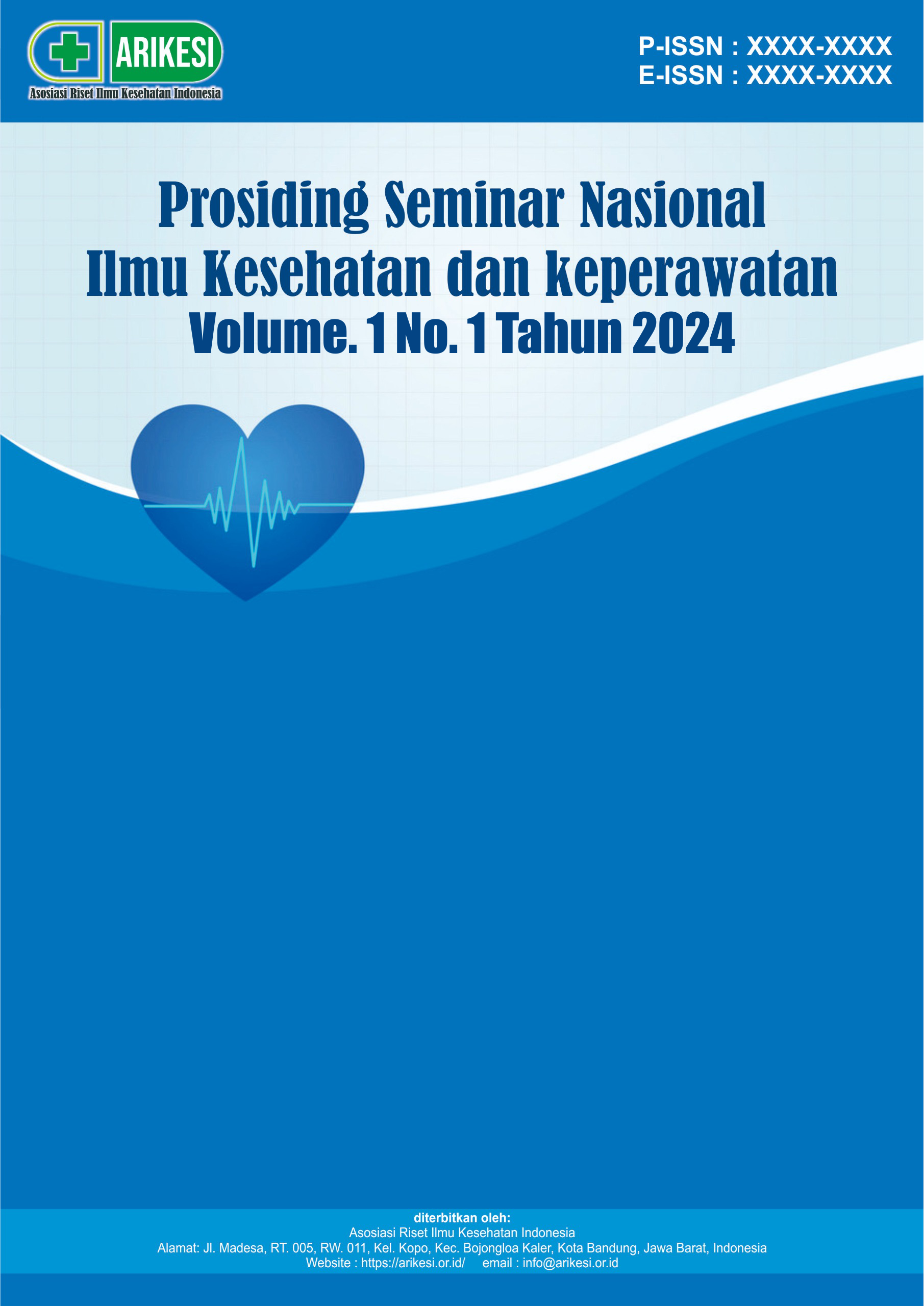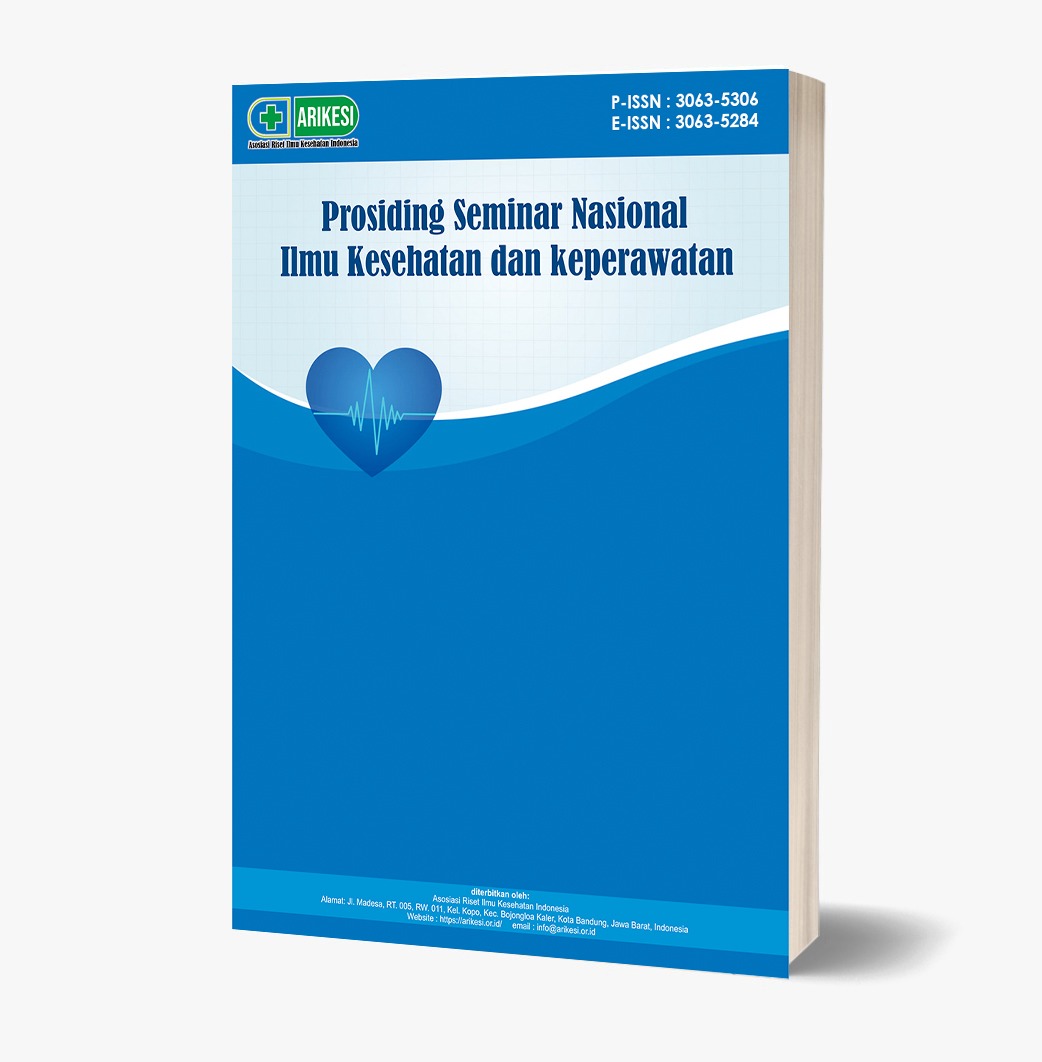Efektifitas Ekstrak Kayu Secang (Caesalpinia sappan L.) Sebagai Biolarvasida Nyamuk Aedes aegypti Penyebab Demam Berdarah Dengue
DOI:
https://doi.org/10.61132/prosemnasikk.v1i1.15Keywords:
Aedes aegypti, extraction, sappan woodAbstract
Dengue hemorrhagic fever (DHF) is still a public health problem in Indonesia. This disease is caused by the Dengue virus (DENV) from the Flaviviridae family. Dengue virus is transmitted by the mosquito vectors Aedes aegypti and Aedes albopictus. Sappan wood contains active chemicals in the form of flavonoids, tannins and saponins. It is hoped that the sappan wood can be an effective and safe biolarvicide for the environment. The aim of this research is to determine the effectiveness of secang wood extract (Caesalpinia sappan L.) as a biolarvicide for the Ae. aegypti mosquito that causes dengue fever. The research results showed that sappan wood extract concentrations of 30%, 60% and 100% concentration resulted in an average mortality of Ae larvae. aegypti as many as 25 larvae within 24 hours. The 〖LC〗_50 probit regression test shows that the concentration required to kill 50% of the larvae requires a concentration of 14.081%. Based on the results of testing the effectiveness of sappan wood extract (Caesalpinia sappan) on the death of Ae. aegypti concluded that sappanwood extract is capable of providing a larvicidal effect so that it can be an alternative biolarvicide
Downloads
References
Agus. (2012). Pengaruh penambahan ekstrak secang (Caesalpinia sappan L.) terhadap kualitas dodol Garut. Perpustakaan.Uns.Ac.Id, 3(September), 1–47.
Anindya, La. F., Fitriyani, N. L., Maulana, J., & Akbar, H. (2023). Efektivitas spray insektisida nabati terhadap nyamuk Aedes aegypti: Literature review. Promotif: Jurnal Kesehatan Masyarakat, 13(2), 66–73. https://doi.org/10.56338/promotif.v13i2.4543
Astija, A., Wardani, E., Febriani, V. I., & Dhafir, F. (2023). Effect of Jackfruit leaf extract (Artocarpus heterophyllus) on Sitophilus oryzae mortality and rice quality. Scientifica, 2023. https://doi.org/10.1155/2023/1579432
BNPB. (2021). IRBI Tahun 2021. 1(6), 8–11.
Dewi, N. K. R., Satriani, N. L. A., & Pranata, G. K. A. W. (2022). Hubungan pengetahuan dan sikap terhadap perilaku pencegahan demam berdarah dengue pada masyarakat di Kabupaten Buleleng. Jurnal Riset Kesehatan Nasional, 6(1), 67–73. https://doi.org/10.37294/jrkn.v6i1.360
ECDC. (2022). Dengue annual epidemiological report for 2020. Annual Epidemiological, April. https://www.ecdc.europa.eu/sites/default/files/documents/DENGUE_AER_2020_Report-final.pdf
Fadilla, Z., Ariningpraja, R. T., Hikmah, F., & Widada, N. (2022). Survei larva nyamuk Aedes spp. sebagai vektor penyakit demam berdarah dengue. Jurnal Medical Laboratory, 1(1), 29–38. https://doi.org/10.57213/medlab.v1i1.17
Intani, T. R., & Astuti, F. D. (2022). Uji efektivitas larvasida ekstrak bunga kelor (Moringa oleifera) terhadap mortalitas larva Aedes aegypti. Cendana Medical Journal, 10(2), 1–11.
Ishak, N. I., Kasman, & Chandra. (2019). Effectiveness of lime skin extract (Citrus amblycarpa) as natural larvicide Aedes aegypti instar III. Media Kesehatan Masyarakat Indonesia, 15(3), 302–310. https://doi.org/10.30597/mkmi.v15i3.6533
Kemenkes RI. (2022). Laporan tahunan 2022 demam berdarah dengue. Kemenkes RI.
Kemenkes RI. (2023a). Modul MPI.1 bionomik vektor dan binatang pembawa penyakit. Kemenkes RI.
Kemenkes RI. (2023b). Profil kesehatan Indonesia 2022, 218–224.
Ketierteu, D. C. (2022). Uji efektivitas larvasida ekstrak kulit batang bakau minyak (Rhizophora apiculata) terhadap larva Aedes aegypti. Universitas Lampung.
Khan, M. B., Yang, Z. S., Lin, C. Y., Hsu, M. C., Urbina, A. N., Assavalapsakul, W., Wang, W. H., Chen, Y. H., & Wang, S. F. (2023). Dengue overview: An updated systemic review. Journal of Infection and Public Health, 16(10), 1625–1642. https://doi.org/10.1016/j.jiph.2023.08.001
Kusumawati, D. E., & Istiqomah. (2022). Pestisida nabati sebagai pengendali OPT.
Maulina, Y., Asrinawaty, & Kasman. (2020). Potensi ekstrak kayu manis sebagai larvasida alami terhadap jentik Aedes aegypti di laboratorium Litbangkes Tanah Bumbu. Kesehatan Masyarakat, 14. http://eprints.uniska-bjm.ac.id/3707/
Mukhtarini. (2014). Ekstraksi, pemisahan senyawa, dan identifikasi senyawa aktif. Jurnal Kesehatan, VII(2), 361. https://doi.org/10.1007/s11293-018-9601-y
Nomer, N. M. G. R., Duniaji, A. S., & Nocianitri, K. A. (2019). Kandungan senyawa flavonoid dan antosianin ekstrak kayu secang (Caesalpinia sappan L.) serta aktivitas antibakteri terhadap Vibrio cholerae. Jurnal Ilmu Dan Teknologi Pangan (ITEPA, 8(2), 216. https://doi.org/10.24843/itepa.2019.v08.i02.p12
Pakpahan, S. E., Fardila, A., & Kodariah, L. (2023). Pengaruh ekstrak bonggol nanas (Ananas comosus L.) sebagai biolarvasida terhadap kematian larva Aedes aegypti. Jurnal Sains Dan Kesehatan, 5(5), 777–787. https://doi.org/10.25026/jsk.v5i5.2106
Posmaningsih, D., Jumadewi, A., Nuraeni, M., Sali, I. W., Syafitri, D., Fadilla, Z., Suwarja, Kurniawati, I., Wardani, D. P. K., Rachmawati, F., Asmeriyani, & Hidayati, L. (2023). Entomologi. Kendari: PT Media Pustaka Indo.
Roy, S. K., & Bhattacharjee, S. (2021). Dengue virus: Epidemiology, biology, and disease aetiology. Canadian Journal of Microbiology, 67(10), 687–702. https://doi.org/10.1139/cjm-2020-0572
Sanjaya, Y., Dinyati, A., Syahwa, D., & ...(2021). Studi eksplorasi pemanfaatan jenis-jenis tanaman sebagai pestisida nabati di perumahan Pondok Arum, Kecamatan Karawaci, Kota Tangerang, Banten. Prosiding Seminar Nasional Bio, 1, 267–279. https://semnas.biologi.fmipa.unp.ac.id/index.php/prosiding/article/view/37
Vardhani, A. K. (2019). Caesalpinia sappan L: Review article. Proceedings of International Conference on Applied Science and Health, 4, 300–305.
Vij, T., Anil, P. P., Shams, R., Dash, K. K., Kalsi, R., Pandey, V. K., Harsányi, E., Kovács, B., & Shaikh, A. M. (2023). A comprehensive review on bioactive compounds found in Caesalpinia sappan. Molecules, 28(17). https://doi.org/10.3390/molecules28176247
Wahyuni, D., Jasril, Makomulamin, & Sari, N. P. (2018). Carbera manghas leaf extract as larvicide in controlling Aedes aegypti. Proceeding International Conference. CELSciTech, 3, 93–101.
Wahyuni, D., Sari, N. P., & Hanjani, D. L. (2019). White onion (Allium sativum) extract as a vegetable larvicide in blowfly (Calliphoridae) control. Kesehatan Masyarakat, 15(2), 247–257.
William Anthonio T, R., Warsiyah, W., & Warniningsih, W. (2020). Uji efektivitas kematian larva nyamuk Aedes aegypti dengan menggunakan berbagai jenis larvasida. Jurnal Rekayasa Lingkungan, 20(1), 9–16. https://doi.org/10.37412/jrl.v20i1.37







